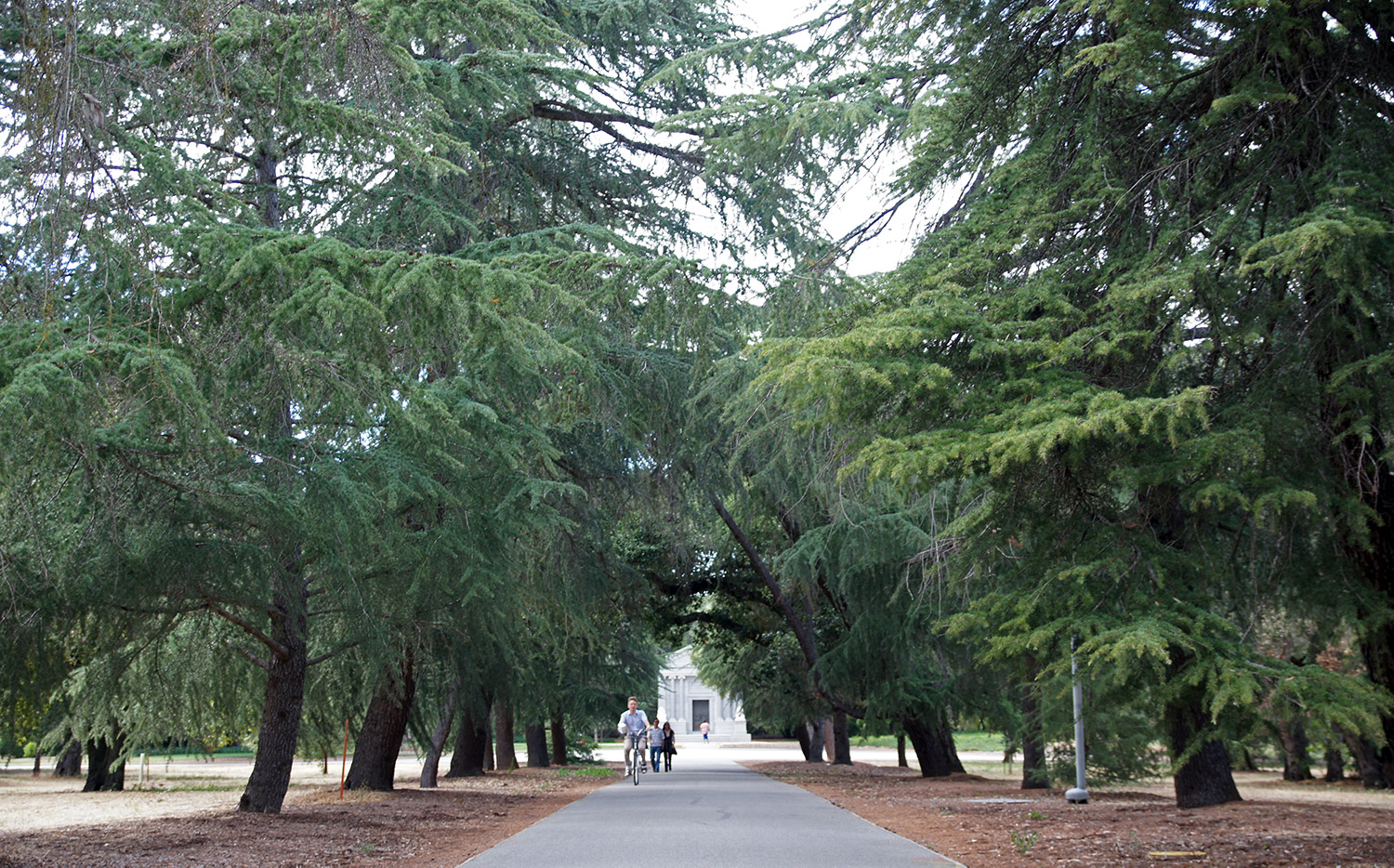Cedrus deodara
 deodar cedar
deodar cedar

Generally speaking, the graceful deodar cedar can be distinguished from the Atlas cedar by its overall appearance or silhouette, its supple apex that bows with the wind or droops, and branches that tend to sweep down to the ground. Its tufts of needles may be twice as long (up to 2 inches).
Six trees are south of Meyer Green, and more can be seen on Jane Stanford Way by Lathrop Library. One of a group on the south side of Burnham Pavilion on Jane Stanford Way has a marker dating it to 1915; its girth is nearly 14 feet. Deodar cedars line Pine Avenue, the old road (now a pedestrian path) to the Mausoleum that takes off from Palm Drive, not far from its intersection with Campus Drive (the two at the end of the path, at the Mausoleum, however, are Atlas cedar). In the arboretum just north of the Mausoleum is an interestingly shaped giant dating to 1889; nearby is a natural dwarf apparently planted at the same time. A pendulous dwarf form is near the southwest corner of the Old Union (location), about 40 feet east of the large deodar cedar there.
Name derivation: Cedrus – Latin name for cedar; deodara – “tree of the gods” in Hindi.
About this Entry: The main text of this entry is from the book Trees of Stanford and Environs, by Ronald Bracewell, published 2005. Sep 2017: Meyer Library note updated to Meyer Green; Atlas cedars at end of Pine Ave noted (SP). Dec 2018: GSB updated to Lathrop Library, dwarf’s location clarified.



